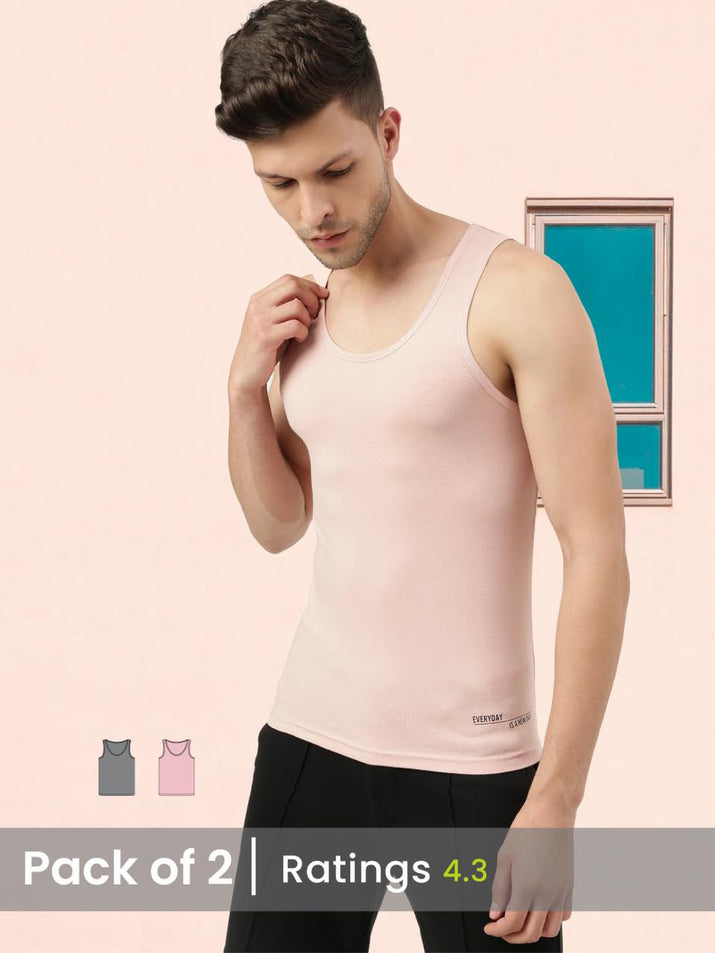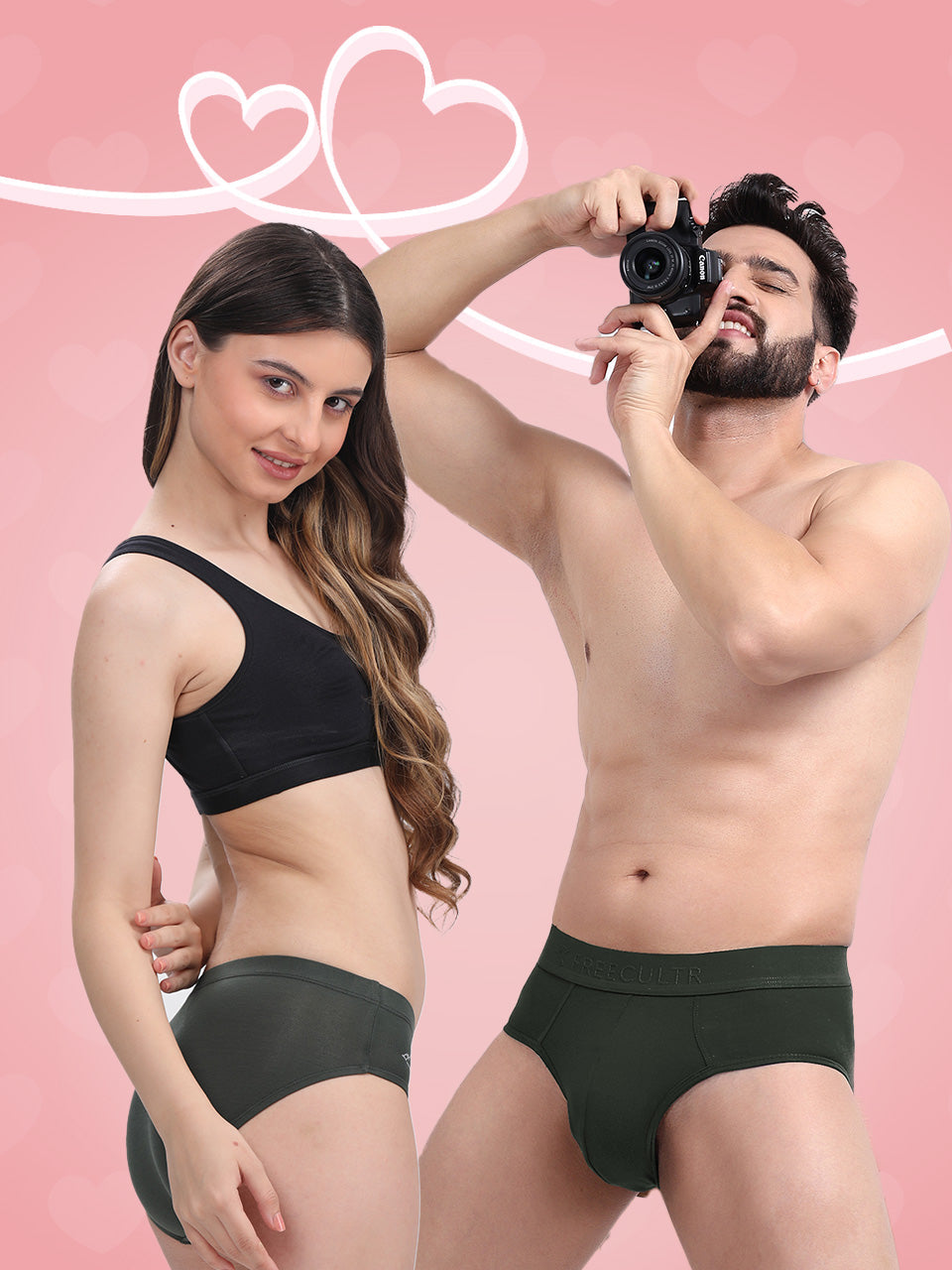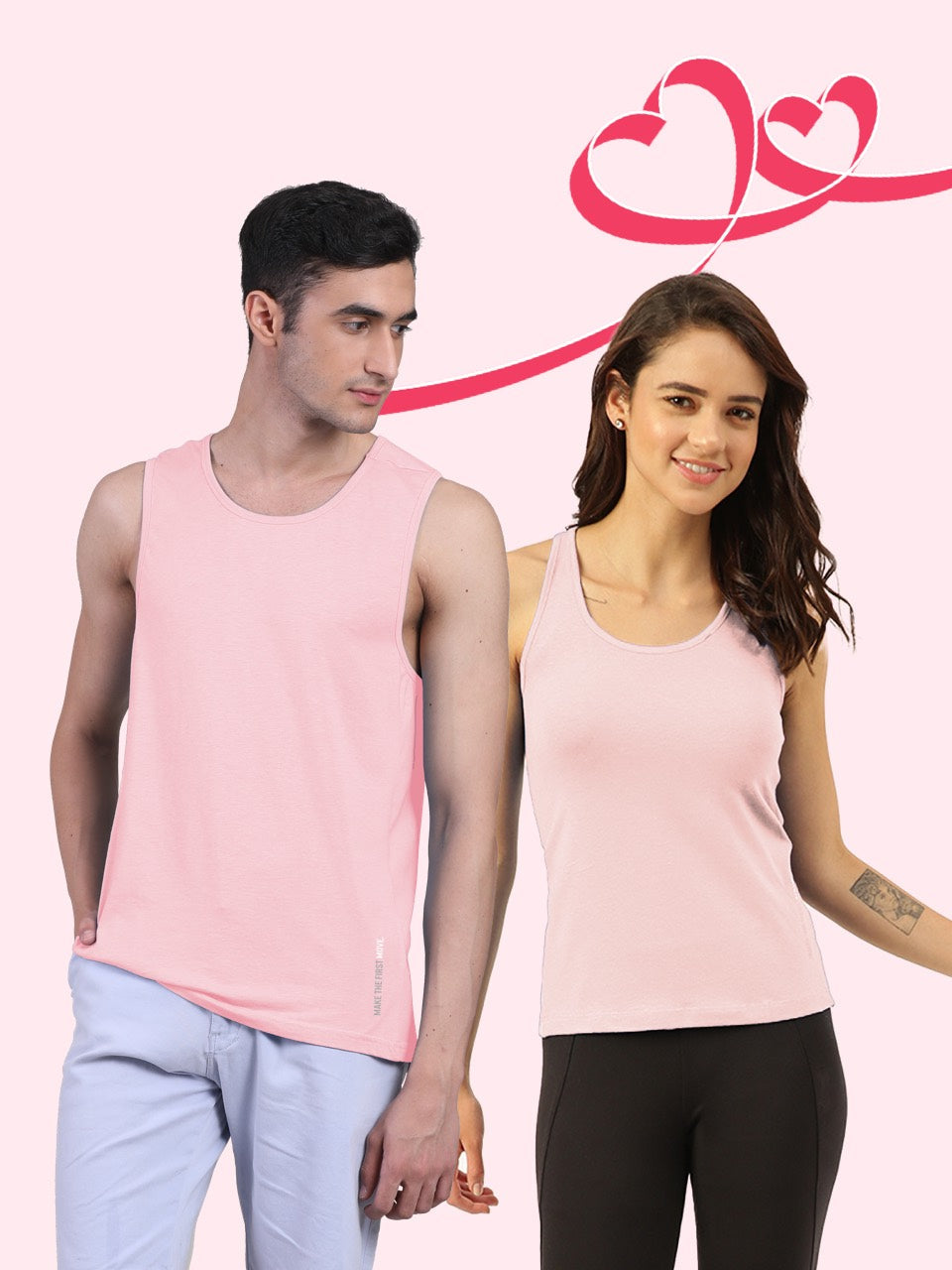Beyond a mere foundational layer, modern inner wear represents a confluence of textile engineering and ergonomic design, critically influencing daily comfort and overall well-being. Today's innovations move far beyond traditional cotton, embracing advanced materials like micromodal, Tencel. Bamboo viscose, which offer superior breathability, moisture-wicking properties. An exceptionally gentle feel against the skin. Recent developments in seamless knitting technology and adaptive fabrics, often incorporating recycled fibers, prioritize both unrestricted movement and environmental responsibility. This evolution transforms inner wear from a simple necessity into a performance-driven garment, essential for optimal layering and a refined tactile experience throughout the day.

Understanding Inner Wear: The Unsung Foundation of Comfort and Style
Often hidden beneath outer garments, inner wear is far more than just a layer of fabric; it is the fundamental foundation of personal comfort, hygiene. The overall fit and drape of our clothes. From a practical standpoint, inner wear creates a crucial barrier between our skin and outer clothing, protecting both. It absorbs moisture, reduces friction. Provides essential support, ensuring comfort throughout the day. Psychologically, well-chosen inner wear can boost confidence, making us feel secure and at ease in our skin. Neglecting the importance of quality inner wear can lead to discomfort, skin irritation. Even impact the longevity of our outer garments. It’s an investment in daily well-being that truly pays off.
The Science of Comfort: Why "Gentle Feel" Matters in Inner Wear
The sensation of inner wear against our skin is paramount. The "gentle feel" is not just a luxury but a necessity for prolonged comfort and skin health. This gentleness stems from several factors:
- Fabric Composition Materials like long-staple cotton, modal, bamboo. Silk are naturally soft and breathable. Their fibers are designed to be smooth, minimizing friction and irritation.
- Weave and Finish How the fabric is woven (e. G. , jersey knit for stretch and softness) and treated (e. G. , brushed finishes) significantly impacts its feel. Seamless construction, for example, eliminates irritating seams.
- Hypoallergenic Properties A gentle feel often correlates with materials that are less likely to cause allergic reactions or skin sensitivities, making them ideal for prolonged skin contact.
- Moisture Management Fabrics that wick away moisture effectively prevent dampness against the skin, which can lead to chafing and bacterial growth, thus contributing to a consistently gentle and dry feel.
When inner wear feels gentle, it allows for unrestricted movement, reduces the likelihood of redness or marks. Ensures that your focus remains on your activities, not on discomfort.
Essential Layering: How Inner Wear Forms the Basis of Your Outfit
Layering is a fundamental principle in dressing, whether for warmth, style, or modesty. Inner wear is always the first, most intimate layer. Its role in effective layering is multifaceted:
- Thermal Regulation In colder climates, thermal inner wear traps a layer of air close to the body, providing insulation. In warmer weather, moisture-wicking inner wear helps to cool by drawing sweat away from the skin, aiding evaporation.
- Smooth Silhouette Well-fitting inner wear provides a smooth base, preventing lines, bulges, or transparency issues with outer garments. This is particularly crucial for fitted dresses, tailored suits, or light-colored clothing.
- Protection and Hygiene Inner wear acts as a barrier, protecting outer clothes from body oils, sweat. Deodorants, thus extending their lifespan and reducing the need for frequent washing. Conversely, it protects sensitive skin from potentially rougher outer fabrics or dyes.
- Modesty and Confidence For many, inner wear provides an essential layer of modesty, offering peace of mind and confidence in various social and professional settings.
Consider a simple use case: an individual wearing a silk blouse. Without a smooth, well-fitted camisole or seamless bra as their inner wear, the delicate fabric might cling awkwardly, reveal bra lines, or even be transparent. The right inner wear ensures the blouse drapes beautifully, allowing the wearer to move with poise.
Decoding Inner Wear Types: A Comprehensive Overview
The world of inner wear is vast, designed to cater to diverse needs, body types. Preferences. Here’s a breakdown of common types:
- Underwear (Briefs, Boxers, Panties) These are primary garments covering the groin area. Variations include briefs (full coverage), boxers (loose, short-like), boxer briefs (snug, mid-thigh), thongs (minimal coverage). Various panty styles (bikini, high-waist, boyshorts) each offering different levels of coverage and support.
- Bras Designed for breast support and shaping. Types include balconette, push-up, sports bras, bralettes, full-coverage, strapless. Nursing bras, each serving specific functions from everyday comfort to high-impact activities.
- Vests/Undershirts Worn under shirts or sweaters. They can be sleeveless, short-sleeved, or long-sleeved, providing an extra layer for warmth, sweat absorption, or to prevent outer shirts from being sheer.
- Shapewear Garments designed to smooth, sculpt. Support the body, offering a streamlined silhouette under clothing. This category includes high-waist briefs, body shapers, slips. Compression garments.
- Slips and Camisoles Lightweight undergarments worn under dresses, skirts, or blouses to prevent transparency, reduce static cling. Provide a smooth layer.
- Thermal Wear Specialized inner wear designed to provide warmth in cold conditions, often made from insulating and moisture-wicking fabrics.
Each type of inner wear serves a unique purpose, contributing to comfort, support. The overall look of an outfit.
Material Matters: Choosing the Right Fabric for Your Inner Wear
The fabric composition of your inner wear is arguably the most critical factor influencing comfort, durability. Performance. Here's a comparison of common materials:
| Fabric Type | Pros | Cons | Ideal Use Cases |
|---|---|---|---|
| Cotton |
|
| Everyday inner wear, sensitive skin, warm climates (when not engaged in heavy sweating) |
| Modal |
|
| Premium inner wear, sleepwear, those seeking ultimate softness |
| Bamboo |
|
| Eco-conscious consumers, sensitive skin, comfortable everyday inner wear |
| Silk |
|
| Luxury inner wear, special occasions, sleepwear, temperature regulation |
| Synthetics (Polyester, Nylon, Spandex/Elastane) |
|
| Sports inner wear, shapewear, everyday wear requiring stretch and durability |
The choice of material for your inner wear should align with your activity level, climate. Personal skin sensitivities. For instance, for high-intensity workouts, synthetic moisture-wicking inner wear is superior to cotton which would retain sweat.
Fit and Sizing: The Unsung Heroes of Inner Wear Comfort and Health
Even the most luxurious fabric will fail to deliver comfort if the fit is incorrect. Proper fit and sizing are critical for inner wear for several reasons:
- Optimal Support Bras, for example, rely heavily on precise sizing to provide adequate breast support, preventing discomfort and potential long-term issues like back pain. Underwear should offer support without constricting.
- Reduced Chafing and Irritation Inner wear that is too tight can dig into the skin, causing redness, irritation. Even nerve compression. Loose inner wear can bunch up, leading to friction and chafing, especially during movement.
- Improved Circulation Overly tight waistbands or leg openings can restrict blood flow, leading to discomfort and potential health concerns over time.
- Enhanced Garment Appearance Correctly sized inner wear creates a smooth, seamless foundation that allows outer clothing to drape beautifully. Ill-fitting inner wear can create visible lines, bulges, or an uneven silhouette.
- Hygiene and Breathability Inner wear that fits well allows for proper airflow, which is essential for maintaining a healthy environment and preventing moisture buildup in sensitive areas.
A common mistake is assuming one size fits all. Body shapes and sizes fluctuate. It's advisable to regularly measure yourself or get professionally fitted, particularly for bras, to ensure your inner wear continues to provide optimal comfort and support. Remember, a comfortable fit means you barely notice your inner wear throughout the day.
Care and Longevity: Maximizing the Life of Your Gentle Feel Inner Wear
Proper care is essential to maintain the gentle feel, shape. Hygiene of your inner wear, ensuring it lasts longer and performs optimally. Here are actionable tips:
- Read Care Labels Always check the specific washing instructions on each garment's tag. Different fabrics have different needs.
- Separate Colors and Delicates Wash whites separately to prevent discoloration. Always wash delicate inner wear (like bras with lace or underwire, or silk items) in a mesh laundry bag to protect them from tangling or stretching.
- Use Gentle Detergent Opt for mild, pH-neutral detergents, especially for sensitive skin or delicate fabrics. Avoid harsh chemicals or bleach, which can degrade fabric integrity and elasticity.
- Cold Water Wash Washing in cold water helps preserve fabric colors, elasticity. Overall shape. It also consumes less energy.
- Hand Washing vs. Machine Washing For bras and very delicate items, hand washing is ideal. For machine washing, use a "delicate" or "hand wash" cycle.
- Air Drying is Best The heat from tumble dryers can damage elastic, shrink fabrics. Warp underwires. Lay inner wear flat or hang it to air dry. If using a dryer, use the lowest heat setting.
- Store Properly Fold and store inner wear neatly to maintain its shape. Bras should be stored flat or hung to prevent cups from deforming.
As a rule of thumb, inner wear, particularly bras, should be replaced every 6-12 months, or sooner if signs of wear (stretched elastic, frayed fabric, loss of shape) appear. This ensures continued support and hygiene.
Innovations in Inner Wear Technology: Beyond Basic Comfort
The inner wear industry is continually evolving, integrating advanced technologies to enhance comfort, performance. Functionality. These innovations go far beyond basic fabric and design:
- Seamless Technology Utilizing circular knitting machines, seamless inner wear is created without traditional seams, eliminating chafing and visible lines under clothing. This provides a second-skin feel, making it incredibly comfortable for everyday wear and active lifestyles.
- Moisture-Wicking Fabrics These specialized synthetic or natural blend fabrics are engineered to draw sweat away from the body's surface to the fabric's outer layer, where it can evaporate quickly. This keeps the wearer dry and comfortable, crucial for sports inner wear and hot climates.
- Antimicrobial and Odor-Control Treatments Fabrics are treated with silver ions or other antimicrobial agents to inhibit the growth of bacteria that cause odor. This extends freshness and hygiene, especially beneficial for active wear or prolonged use.
- Adaptive Fabrics Some inner wear now incorporates fabrics that adapt to body temperature, providing cooling properties when warm and insulation when cold, offering dynamic comfort.
- Smart Inner Wear Emerging technologies include inner wear with integrated sensors for tracking vital signs, sleep patterns, or even posture correction, transmitting data to smartphone apps.
- Ergonomic Design and Support Systems Advanced designs incorporate targeted support zones, multi-directional stretch. Pressure distribution mapping to provide customized comfort and support for different body parts and activities.
These innovations exemplify how inner wear is transforming from a mere necessity into a high-performance garment designed to enhance well-being and meet diverse lifestyle demands.
Real-World Applications and Choosing Your Perfect Inner Wear
The ideal inner wear varies significantly based on the context. Here are some real-world applications and actionable tips for choosing your perfect inner wear:
- Daily Comfort For everyday wear, prioritize breathable natural fabrics like cotton or modal. Look for soft waistbands and smooth seams. A simple brief or bikini style for underwear. A comfortable, well-fitting t-shirt bra or bralette, are excellent choices.
- Active Lifestyle/Sports Opt for moisture-wicking synthetic blends (polyester, nylon with spandex) that offer strong support and quick-drying properties. Sports bras are essential for minimizing bounce and discomfort during physical activity. Seamless construction can prevent chafing during prolonged movement.
- Formal or Figure-Hugging Outfits This is where seamless inner wear and shapewear shine. Choose nude or skin-toned options to avoid visible lines. High-waisted briefs, shaping shorts, or full slips can provide a smooth silhouette under dresses or tailored clothing.
- Loungewear and Sleep Comfort is paramount. Loose-fitting styles made from ultra-soft fabrics like bamboo, modal, or silk are ideal. Bralettes or soft cup bras offer gentle support without restriction.
- Cold Weather Layering Thermal inner wear made from merino wool or synthetic blends provides essential insulation. Look for options with flatlock seams to prevent irritation when layered under other garments.
- Prioritize Fit Always ensure your inner wear fits snugly but without constriction. Never compromise on fit for style.
- Consider the Outerwear Think about what you'll be wearing over your inner wear. This dictates color, seam visibility. Level of support needed.
- Assess Your Activity Match the inner wear's features (support, moisture-wicking, breathability) to your planned activities.
- Invest in Quality While tempting to buy cheap, investing in quality inner wear made from good materials will pay off in comfort, durability. Better support.
- Listen to Your Body If something feels uncomfortable, it's not the right inner wear for you. Your body's signals are the best guide.
By thoughtfully selecting your inner wear based on these considerations, you ensure that this essential layer provides the comfort, support. Gentle feel necessary to conquer your day with confidence.
Conclusion
Ultimately, inner wear transcends mere clothing; it's the silent, foundational layer that dictates your comfort and confidence throughout the day. With recent advancements in textile technology, like the widespread adoption of bamboo blends for their unparalleled softness and moisture-wicking capabilities, or innovative seamless constructions, finding inner wear that feels like a second skin has never been easier. I personally discovered that investing in a few high-quality, breathable pieces, such as those featuring micro-modal, completely transformed my daily experience, especially under a crisp shirt for long workdays or during active pursuits. Therefore, make a conscious choice to prioritize inner wear that truly aligns with your body and lifestyle. Seek out designs that offer a gentle feel and impeccable fit, ensuring they provide essential layering without bulk or restriction. It’s an actionable step towards enhancing your overall well-being, allowing you to move with ease and carry yourself with an undeniable sense of comfort. Embrace this foundational comfort; it’s the secret to feeling your best, from the inside out, every single day.More Articles
Men's Inner Wear – Essential Comfort & Seamless FeelTrunks for Men – Superior Fit & Freedom of Movement
Men's T-Shirt – Versatile Wardrobe Staple & Soft Fabric
Women's Tank Top – Flattering Fit & Breathable Design
Performance Sleeves – Enhanced Protection & Muscle Support
FAQs
Why is inner wear considered an essential layering piece?
Inner wear forms the crucial first layer against your skin. It helps regulate body temperature, wicks away moisture. Provides a smooth foundation for other garments, preventing chafing and adding an extra layer of warmth or coolness depending on the fabric.
What does 'gentle feel' really mean when we talk about inner wear?
A 'gentle feel' refers to the soft, non-irritating. Comfortable sensation of the fabric against your skin. It means the material is breathable, smooth. Doesn't cause itching, redness, or discomfort, ensuring you feel good all day long.
What kind of fabrics offer the best gentle feel and layering benefits?
Natural fibers like cotton, bamboo. Silk are excellent for their softness and breathability. For performance and moisture-wicking, blends with modal, Tencel, or specialized synthetics can also offer a great gentle feel while enhancing layering benefits like temperature control.
Is inner wear only for warmth, or are there other reasons to wear it?
While inner wear certainly adds warmth in colder climates, its benefits go beyond that. It creates a protective barrier for your outer clothes, absorbs sweat to keep you feeling fresh, provides modesty. Can enhance the drape and fit of your entire outfit.
How does inner wear contribute to overall outfit comfort and fit?
By providing a smooth, consistent base, inner wear eliminates direct contact between your skin and coarser outer fabrics, preventing irritation. It also helps your clothes lie better, avoiding awkward bulges or clings, which improves the overall silhouette and comfort of your attire.
Can wearing the right inner wear actually help with skin sensitivity issues?
Absolutely. For those with sensitive skin, choosing inner wear made from hypoallergenic, breathable. Ultra-soft materials like organic cotton or bamboo can significantly reduce irritation, rashes. Discomfort often caused by less suitable fabrics or seams.
What's the best way to care for my gentle-feel inner wear to make it last?
To preserve the softness and integrity, always check the care label. Generally, washing in cold water on a gentle cycle with a mild detergent and air-drying or tumble drying on low heat is recommended. Avoid harsh bleaches and excessive heat, which can damage delicate fibers.






